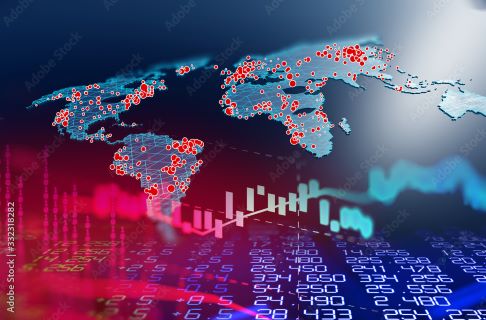
UNCTAD’s Global Policy Model (GPM) will be extended to an expanded range of developing countries, in particular focusing on the macroeconomic and financial conditions of selected developing countries in Africa, Asia and Latin America. The analysis will include up to 40 countries by Phase 3, and applied to sub-groups of developing countries with similar macroeconomic features. In this way, the ‘flexible geographical disaggregation’ capability of the GPM will be leveraged.

The COVID-19 shock was a major factor behind a contraction of the Kenyan economy of 0.3 per cent in 2020, after the robust growth rates of 5 and 6 per cent in the two years before the pandemic. The fall in activity was, however, much milder than in many countries of the African continent, whose growth decelerated by 2 per cent, on average. This is the result of Kenya’s relatively more diversified and resilient economy.
This paper uses UNCTAD’s Global Policy Model (GPM) to project the economic prospects for 34 Developed and Developing Economies from 2022 to 2030. Fifteen Developing Countries have been added to the Model’s database for this exercise.
Climate change has deepened the vulnerability of multiple groups of the population, particularly the poor. The development challenge for low-income countries would be to reduce vulnerabilities – some of which are climate-related. In many instances, the pre-existing vulnerabilities have been aggravated by climate variation.

This note reports work to prepare a baseline scenario and two alternative scenarios for analysis of finance and development issues facing developing countries in the aftermath of the COVID19 crisis.
This paper focuses on the effect of the pandemic on economic growth, sectoral value-added, the external sector both from Ethiopia and global perspective based on the UN Global Policy Model analysis. Three scenarios were envisaged, in which the effect of COVID-19 is compared to what would have been the economic condition without COVID-19. The analysis shows that the macroeconomic effect of COVID-19 in Ethiopia is to reduce growth, exports, imports and public revenue.
The analysis in this study attempted to show the macroeconomic and social effect of the COVID-19 pandemic on GDP and sectoral GDP growth, including the external sector, on a small mineral dependent economy in Africa -Zambia.
In this paper we use the United Nations Global Policy Model (GPM) to make projections to 2030 in order to help clarify some of the likely major Economic and Environmental challenges facing Developing Economies in their efforts to achieve the Sustainable Development Goals. The paper also describes the dynamics and potential impact on Developing Economies of changes that could help the world to make substantial progress by 2040 in reaching the ambitious, but absolutely necessary, target of Zero Net Carbon Emissions by midcentury.
Policy-oriented analysis for countries to better understand global and regional trends in the light of the COVID-19 pandemic.